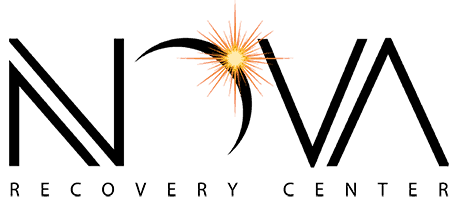
Table of contents
Have you ever shown up to work high or hungover from drinking the night before? How well did you perform that day? Many employees suffer and struggle to perform to their full potential due to the effects of substance abuse. Employees with substance abuse issues are less productive, use more sick days, are more likely to injure themselves or file workman’s compensation claims. They’re also more likely to perceive their jobs negatively, to have problems with supervisors, and to make mistakes. It’s a problem for the company and for millions of people.
As a result of media coverage and personal experiences, many people understand that the abuse of alcohol and illicit drugs are persistent issues in society. What some may not fully understand is how this abuse affects the workplace and how the workplace may affect substance abuse.
Statistics on Drug and Alcohol Abuse in the Workplace
Problems involving substance abuse in the workplace are more common than you might think. Here are some of the most recent statistics involving drug and alcohol abuse in the workplace.
- According to the Quest Diagnostics Drug Testing Index (DTI), in 2016, 4.2 percent of all urine tests came back positive, up from 4 percent in 2015 and the highest rate since 2004’s 4.5 percent.1
- Employee cocaine usage was up 12 percent from 2015, reaching a seven-year high of 0.28 percent.1
- Positive oral drug tests increased nearly 75 percent to 8.9 percent in 2016, up from 5.1 percent in 2013.1
- In 2015, almost half (45%) of individuals in the general U.S. workforce with a positive drug test for any substance in 2015 showed evidence of marijuana use.2
- In the general U.S. workforce, the rate of amphetamine (found in drugs like Adderall), marijuana, and heroin detection increased annually for the past five years in urine testing.2
- The leading cause of missed workdays in America over the past year was “pain medication use disorder” (29 days), followed by “illicit drug use disorder” (18 days), followed by “marijuana use disorder” and “any substance use disorder” at 15 days each. Alcohol use ranked fifth at 14 days compared to the 10 days missed by the general workforce.3
- 70 percent of employers have been directly impacted by prescription drug misuse.4
- 47 percent of workplace accidents that result in serious injury and 40 percent of those that end in death have alcohol and other drugs involved.
- Employees who abuse drugs are more than three and a half times as likely to have an accident on the job, and five times more likely to have an off-the-job accident that impacts workplace performance.5
- 70 percent of drug abusers are employed.6
Looking for treatment for you or a loved one?
Nova Recovery Center can help!
Call (512) 605-2955 today to learn about our outpatient and inpatient options.
Frequently Abused Drugs in the Workplace
- Alcohol
- Prescription stimulants like Adderall, Vyvanse, and Ritalin
- Illegal stimulants like cocaine or methamphetamine
- Antidepressants like Prozac, Cymbalta, Celexa, Trazodone, , and Wellbutrin
- Prescription sedatives like Lunesta or Sonata
- Benzodiazepines like Ambien, , , or Ativan
- Herbal drugs like Kratom, Salvia, or XPlode
- Opioids like heroin, hydrocodone, methadone, morphine, or oxycodone
Negative Effects of Substance Abuse in the Workplace
The effects of substance abuse on the job have a far-reaching impact on the profitability of a business. Many job duties involve being alert and accurate, having quick reflexes and being efficient in completing tasks. When a person is impaired, it can lead to accidents, inefficiency and reduced productivity. Absenteeism due to recovering from the effects of substance abuse and related illnesses can also be costly to businesses. Drug abuse in the workplace cost employers about $81 billion annually.7
Impact of Substance Abuse on Employers
Substance abuse effects that harm employers include:8
- Employees being late or sleeping on the job
- Theft
- Poor decision making
- Problems performing duties
- Decreased efficiency
- Low morale of coworkers
- A high rate of turnover and increased training costs for new employees
- Costs of disciplinary procedures and drug testing programs
Impact of Substance Abuse on Employees
Additionally, job-related stress may encourage some to turn to substances to cope. These include:
- High stress
- Low job satisfaction
- Long hours
- Irregular shifts
- Fatigue
- Isolation
- Repetitive tasks
- Periods of inactivity and boredom
- Remote, irregular or abusive supervision
Often times, coworkers of addicted employees also work longer hours or take on additional tasks and responsibilities at work to compensate for lost productivity that is a result of the substance abuse. Employees may also be at higher risk of getting injured or killed on the job due to the negligent behavior of their addicted coworkers.
Since the majority of drug users are employed, the workplace is a valuable opportunity to reach out with resources to encourage people to get into recovery. Employers and employees can meet and agree on guidelines and programs that would benefit both sides.
[sc name=”phoneinsurancecta”]
10 Common Signs of Workplace Substance Abuse
Many supervisors and business owners make the mistake of assuming they would know if one of their employees was abusing drugs or alcohol on the job, but unfortunately, that’s not always true. While in some cases, substance abuse in the workplace may be obvious, other times it is not.
If you suspect that one of your employees or coworkers is abusing drugs or alcohol at work, there may be some signs and red flags. Here are the most common signs of drug and alcohol abuse in the workplace:
- Falling asleep at work often or appearing to be very tired all the time
- Frequently making mistakes (when the person is typically very conscientious)
- Disappearing or taking frequent trips to the bathroom, break room, back alley, or other places where drugs might be used
- Displaying extreme mood swings
- Being tardy or absent frequently without notification
- Disappearing valuable company property
- Missing appointments and deadlines
- Taking an unusually long time to complete easy, common tasks
- Having trouble concentrating or recalling details or instructions
- Displaying a severe and sudden lack of personal hygiene
Substance abuse at work rarely goes unnoticed, as the effects are very noticeable. Although some addicts may feel like they have their drug or alcohol abuse under control, their ability to function normally will wane with time and the effects of the substance abuse at work will eventually become very apparent.
Effects of Substance Abuse on Society
When an employee chooses to abuse drugs and alcohol on the job, the negative consequences of that decision affect not only the drug user, but also everyone else around them, including coworkers, supervisors, and employees.
The effects of drug abuse on society as a whole include:
- More crime
- More car accidents as a result of driving under the influence
- More incidents of burglary and assault
- Broken family relationships and friendships
- Overpopulated prisons
- More people with mental health problems
- Fewer qualified members of the workforce
- Unhealthy communities (more incidences of lung and cardiovascular disease, cancer, stroke, HIV/AIDS, and Hepatitis B and C.
Looking for treatment for you or a loved one?
Nova Recovery Center can help!
Call (512) 605-2955 today to learn about our outpatient and inpatient options.
Preventing Workplace Substance Abuse
When companies address potential substance abuse issues with proactive programming, many of these issues improve greatly. Programs for education and substance-abuse assistance result in significant performance-related improvements. In other words, it does not pay to ignore substance abuse in the workplace, and it does not pay to simply discount those employees with issues.
Offering help improves the bottom line and helps people. This is why we encourage people to talk about this subject. It will make a direct impact in so many lives. It will improve the quality of life at home and at work. For the employees, co-workers, family members and those afflicted with addiction.
One tool that can have a significant impact on workplace substance abuse is an employee assistance program (EAP). These types of programs offer counseling and assistance in connecting employees who have abuse issues with treatment programs. Also, encouraging people in recovery to work helps them maintain their sober lives. These programs may also provide the following benefits:
- Improve job performance
- Decrease tardiness
- Improve efficiency
- Improve morale
For these programs to be effective, drug testing, trained staff, and workplace monitoring should be in place to implement this type of treatment. While it may add to overhead for the business, the benefits of increased productivity, less absenteeism, improved decision-making and lower turnover may offset the cost of an EAP.
Eligible employees who choose to take advantage of an EAP may also utilize FMLA leave to enroll in rehab. This provides adequate time for long-term residential care if it’s needed, without jeopardizing the employee’s employment.
Nova maintains relationships with several different companies to provide EAPs for employees who have substance abuse problems. With a full continuum of care spanning detox, rehab, sober living, personal monitoring, and aftercare, Nova provides the long-term treatment clients need to regain their health and become an active and contributing member of the workforce. This is not only beneficial for the employee, but also for the employer.
Nova will also work with the EAP representative to make sure the client has an adjusted work schedule that encompasses their addiction treatment and their job duties at work. Once employees have completed rehab, many EAPs also provide assistance re-integrating into the workplace.
What to Do If You Suspect Drug and Alcohol Abuse in the Workplace
Changing Society Through the Workplace
An important first step in addressing the problem of substance abuse in the workplace is the awareness that it is a common problem not just shared by families and friends, but one that also extends into employers’ and employees’ relationships.
Once acknowledged, the resources between employers who have the means and motivation to offer recovery aid to employees who need treatment can have a profound positive impact on society at large. Both employers and employees will benefit from these changes, improving lives as well as profits.
It is not just about the bottom line. Companies that care about their employees on a personal level and offer help where needed are simply better places to work. This does help the bottom-line, but it also helps people. Recovering alcoholics and addicts all over the world learn that helping people is the key to happiness. It seems the health of a business can benefit from this attitude as well!
If you or a loved one is struggling with addiction and it is taking a toll on your life at work and at home, there has never been a better time to get help. Nova Recovery Center provides a long-term drug and alcohol rehab program that is specifically designed to help you achieve lifelong recovery. You’ve lived under the grip of addiction for long enough. Reclaim your life and get started with your rehab program today.
References:
- https://www.ehstoday.com/safety/workforce-drug-use-rise-infographic
- https://www.insurancejournal.com/news/national/2016/09/16/426713.htm
- http://www.areadevelopment.com/workplace-trends/workforce-q4-2017/impact-of-substance-abuse-on-finding-a-quality-workforce.shtml
- https://www.nsc.org/in-the-newsroom/nsc-applauds-legislation-to-establish-advisory-committee-on-opioids-in-the-workplace
- https://noln.net/2017/07/31/workplace-drug-abuse-reducing-risk-impaired-workers/
- https://www.ncadd.org/about-addiction/addiction-update/drugs-and-alcohol-in-the-workplace
- http://www.ehstoday.com/health/drug-abuse-costs-employers-81-billion-year
- https://www.safetyservicescompany.com/resources/safety-whitepapers/substance-abuse-prevention-workplace/
*This article was updated on 7/26/18.

